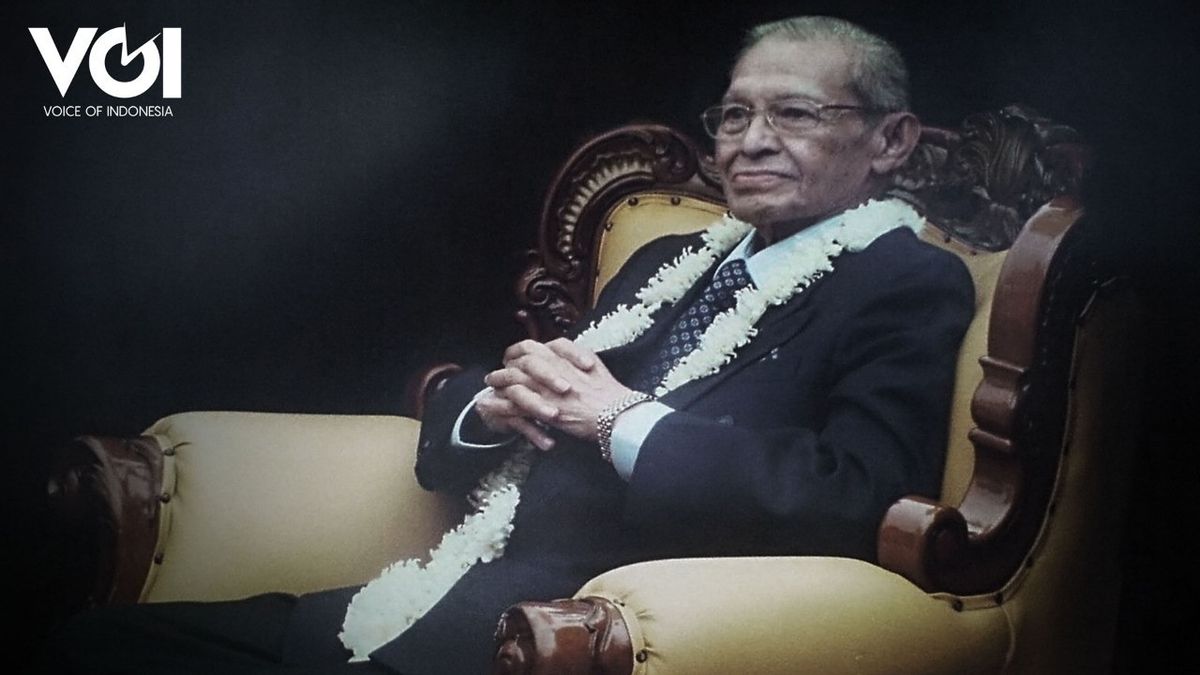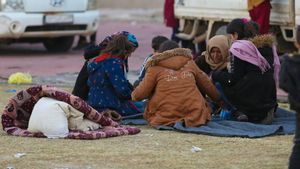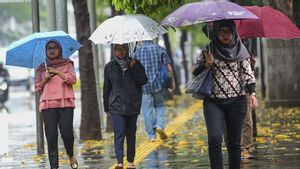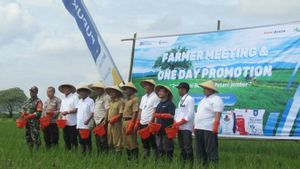The article "Indonesian Cannabis Culture: From Health to Spirituality" has discussed the closely related life of Indonesian people with marijuana from generation to generation. Aceh, however, is a region that has adopted so much of the cannabis culture into their lives. Even in the movement carried out by the Free Aceh Movement (GAM). The group that demands for Acehnese independence uses marijuana to fund their movement. Hasan Tiro is the figure behind this idea. Let's continue with VOI's signature Series, "Don't Panic It's Organic".
Speaking of marijuana, Aceh is the archipelago's most identical region. The inhabitants of the land nicknamed Serambi Makkah have been familiar with the cannabis plant for centuries. They use the cannabis plant for various purposes of daily life, from cooking spices, herbal medicines to natural pesticides.
The Acehnese, whose lives are strongly based on Islamic law, don't even feel they have to stay away from marijuana. This is because at that time generally the people of Aceh in the 16th and 17th centuries referred to the Tajul Muluk book or the Mujarobat book which contained substances about the medical use of marijuana.
Acehnese cultural observer, Tungang Iskandar, who was born and raised in Aceh, recounts this history. He also emphasized the Acehnese view of marijuana in a religious context. "Marijuana is haram because of its abuse. It means that if it is corrected, it could be a different story, "said Tungang when contacted by VOI some time ago.
"Islam is everything for good. So, let us examine and take a stand for all the gray issues, namely by supporting everything that has many benefits and rejecting things that are indeed bad," added Tungang.
Entering the Dutch East Indies era, to be precise the 19th century, almost all farmers in Aceh planted marijuana. Quoted from the official website of the Indonesian Cannabis Circle (LGN). Farmers in Aceh grow cannabis trees to ward off pests from other crops they plant. In fact, the people of Aceh at that time recognized marijuana as "lako kopi", which means the husband of the coffee plant.

"Lako is a man, a man or a husband. Coffee is a coffee plant. The cannabis plant can be called a coffee man or a coffee plant husband. So, he protects the coffee plant from pests or attacks from outside," said Dhira Narayana. , Chairman of the LGN, in his interview with the Fresher Globe some time ago.
"Hence, if in Aceh the coffee plant tastes very delicious, there is no pest, because the pests prefer the cannabis plant. That's why he calls this marijuana plant of the husband. Almost actually for all plants. Because of its function as a natural pesticide," added Dhira. .
The familiarity of marijuana with the people of Aceh and the majority of people in other parts of the archipelago must be limited in line with the implementation of the narcotics decree or verdoovende middelen ordonnantie in 1927.The rule was then updated through a number of ratifications in the United Nations (UN) conventions in 1961, 1971 and 1988.
Aceh's marijuana worldwide (GAM)
Marijuana cultivation in Aceh is often associated with the Free Aceh Movement (GAM) group. Since it was proclaimed on December 4, 1976, the group that wants to restore Aceh's heyday as when it was independent as a sultanate has used marijuana to fund their movement. Hasan Tiro, the leader of the movement, played a major role in this.
Since then, Hasan Tiro has used marijuana as a source of funds. The Human Rights Watch report entitled Indonesia Human Rights Abuses in Aceh in 1990 describes the sources of funding for GAM from various sources, ranging from foreign diaspora funds, tax money from the voluntary struggle of the Acehnese people, selling timber, to collecting taxes from cannabis farmers and controlling the trade. marijuana through collaboration with drug kingpins outside Aceh.
The use of marijuana was increasingly carried out by GAM when the Indonesian government designated Aceh as a military operations area (DOM) from 1989 to 1998. The operation codenamed "Red Jaring" was carried out to hunt down GAM troops in all corners of Aceh. Automatically, this condition made GAM spend more than before.

One year before the establishment of the DOM, to be precise in 1988, GAM district leaders were arrested and reported on the management of hectares of cannabis fields. This field is said to have been used as a source of money for GAM operations. However, there are many doubts about the truth. Therefore, in 1989, the army moved through Operation Nila I. An operation was carried out to eradicate marijuana from GAM.
GAM's practice of using marijuana as a source of funding is also recorded in the Kopassus book for Indonesia by Iwan Santosa and EA Natanegara. In the book, both of them tell about the disguise of Sgt. Badri - not his real name - who was assigned to become a member of GAM in 2003. In his assignment report, Sgt Badri managed to trace one of GAM's funding from the sale of dry cannabis originating from North Aceh and East Aceh.
According to Sgt Badri's investigation, the dried marijuana was smuggled through the Malaysian sea route. Sgt Badri's observations were reinforced by the discovery of GAM's cannabis fields in the village of Makmur, Aceh Besar in July 2003. The Liputan6.com report explains how these fields are only a small part of the thousands of hectares of other cannabis fields controlled by GAM.

Mardigu Wowiek, a terrorism observer, reinforces this view. In rebellion movements, separatist groups often use local resources to fund their movements. Even for GAM and marijuana. "Marijuana could be a source of funds for the Aceh terrorists. For operations that require huge funds, I really believe that the cannabis fields are the source of funds," said Mardigu, quoted from Kompas.com, 2010.
However, it is still difficult to directly link Aceh's cannabis cultivation to the GAM movement. That one of GAM's sources of funding is the use of marijuana is correct. However, there are other sources of funding that are more dominant in funding the GAM movement. The conclusion is written in the Transnational Institute report.
The report concludes that cannabis is one form of resource exploitation that occurs. Cannabis farmers are suppressed just as local coffee farmers and fishermen are blackmailed. Moreover, the exploitation of cannabis in the context of the Aceh conflict is extremely complex. Because, during the conflict period, not only GAM were caught with marijuana. The police and the army have recorded cases involving them in the illegal trade practice of the cannabis plant.
I don't know, what is clear, in that period we can clearly see how Acehnese marijuana has gone global. In 2004, an estimated 30 percent of cannabis in Southeast Asia came from Aceh. Unfortunately, everything is circulating under the power of the black market. The state failed to take advantage of that potential.
Next Article: Those Who Benefit from the Legalism of Marijuana
The English, Chinese, Japanese, Arabic, and French versions are automatically generated by the AI. So there may still be inaccuracies in translating, please always see Indonesian as our main language. (system supported by DigitalSiber.id)













